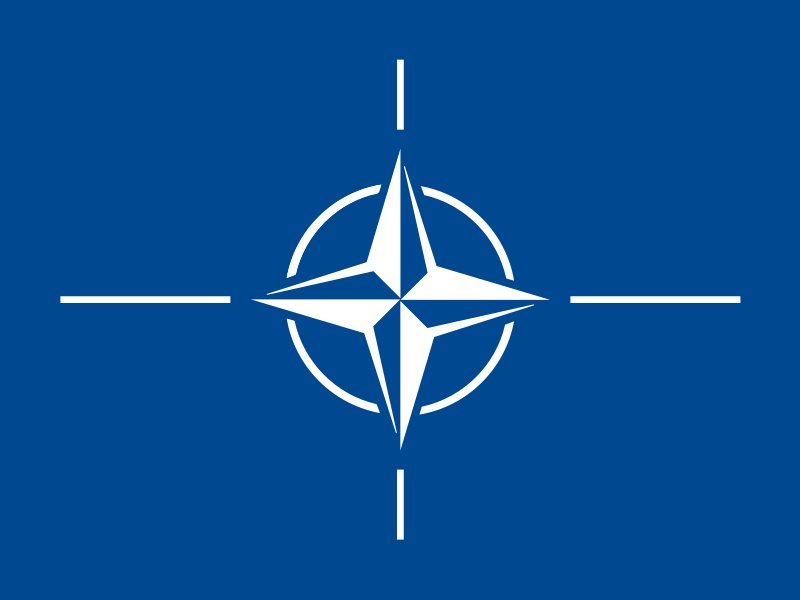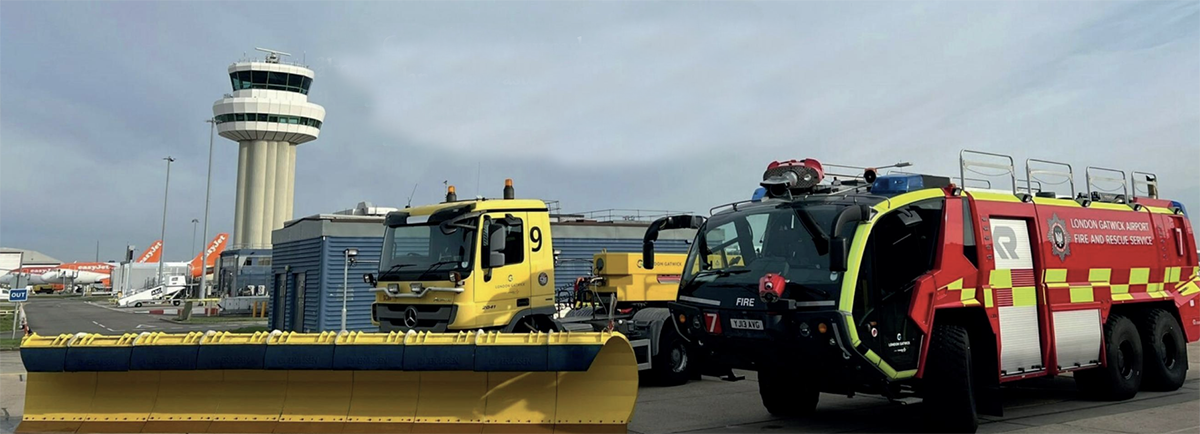
Sweden’s recent accession into NATO may have set Vladimir Putin’s teeth on edge, but he knows as well as any leader that if the growing western military alliance really was a global aggressor, we would all be radioactive ash by now.
On April 4th this year, The North Atlantic Treaty Organisation (NATO) marks its 75th anniversary. Alan Wares takes a look at this huge organisation which, depending on your point of view, has either been a smokescreen for Western aggression, or the ultimate global peacekeeper.
NATO has its roots in the Second World War, or more specifically, The Atlantic Charter, a 1941 agreement between the United States and United Kingdom. The Charter laid out a framework for international cooperation without territorial expansion after World War II. Until this point, the US had previously had an isolationist, neutral stance – especially when it came to European matters.
The Treaty of Brussels was a mutual defence treaty against the Soviet threat at the start of the Cold War. It was signed on March 17th 1948 by Belgium, the Netherlands, Luxembourg, France, and the United Kingdom.
The Soviet threat became an immediate one with the Berlin Blockade in 1948 (the occupational Soviet forces in eastern Germany effectively isolated West Berlin from outside help). Thousands of tons of food, medicine and supplies were air-dropped (hence the so-called ‘Berlin Bridge’) from a total of 250,000 flights over 15 months. When the Soviets realised their blockade wasn’t working, they stopped it, and allowed road and rail routes to re-open. It was, arguably, the first international crisis of the Cold War.
Also in 1948, Soviet armed forces, backing the local Communist Party, overthrew the democratically-elected Government of Czechoslovakia, without Western allies being able to do much about it.
It led British Foreign Minister Ernest Bevin to state that the best way to prevent ‘another Czechoslovakia’ was to evolve a joint Western military strategy. He got a receptive hearing in the United States, especially with the American anxiety over Italy and its resurgent Italian Communist Party – or rather, the Soviet Union’s interest in helping the party.
These talks resulted in the signature of the North Atlantic Treaty on April 4th 1949 by the member states of the Treaty of Brussels, plus the United States, Canada, Portugal, Italy, Norway, Denmark, and Iceland.
NATO formed with 12 founding members and has added new members ten times since, most recently when Sweden joined the alliance last month. In addition, NATO currently recognises Bosnia and Herzegovina, Georgia, and Ukraine as aspiring members.
Enlargement has led to tensions with non-member Russia, one of the 18 additional countries participating in NATO’s Partnership for Peace programme. Another 19 countries are involved in institutionalised dialogue programmes with NATO.
Today, NATO has its headquarters in Brussels, having originally been based in Belgravia, London and, from 1952 to 1967, in Paris.
NATO engagements
No military operations were conducted by NATO during the Cold War. Following the end of the Cold War, the first operations, Anchor Guard in 1990 and Ace Guard in 1991, were prompted by the Iraqi invasion of Kuwait. Airborne early warning aircraft were sent to provide coverage of south eastern Turkey, and later a quick-reaction force was deployed to the area.
NATO troops were busy throughout the 1990s, mostly in the Balkans, as various cultures and nations in the former Yugoslavia – hitherto kept together, outside of Soviet influence, under Marshall Tito – splintered, and centuries-old conflicts re-ignited.
The Twin Towers attacks in New York on September 11th 2001 caused NATO to invoke Article 5 – a statement which commits each member state to consider an armed attack against one member state to be an armed attack against them all – of the NATO Charter for the first time in the organisation’s history.
The invocation was confirmed on October 4th 2001 when NATO determined that the attacks were indeed eligible under the terms of the North Atlantic Treaty. The official actions taken by NATO in response to the attacks included Operation Eagle Assist and Operation Active Endeavour, a naval operation in the Mediterranean Sea designed to prevent the movement of terrorists or weapons of mass destruction, and to enhance the security of shipping in general.
Towards the end of the decade, a new phenomenon in modern day shipping presented itself. Beginning on August 17th 2009, NATO deployed warships in an operation alongside Russia, China and many others to protect maritime traffic in the Gulf of Aden and the Indian Ocean from Somali pirates, and help strengthen the navies and coast guards of regional states.
FINLAND
Since the end of the Cold War, apart from Sweden and Finland, every new entrant into NATO has been a nation that was formerly under Soviet influence in the second half of the 20th Century.
Finland has only been an independent nation for 106 years, gaining its own sovereignty from the Russian Empire in 1917. The previous 200 years had seen control of the Finnish land mass swap between Sweden and Russia many times.
Following the October Revolution, where the Bolsheviks swept to power, they were happy for Finland to be granted its freedom. The White Russians were fine with this declaration as well as they were expected to win back the seat of power in St Petersburg from the newly-formed Russian Provisional Government, and would merely reverse this approval. When Russian Provisional Government maintained power, Finland made its own declaration of independence on December 6th 1917.
Two decades later, The Winter War was a war between the Soviet Union and Finland. It began with a Soviet invasion of Finland on November 30th 1939. Despite Finland’s vow of neutrality ahead of World War II, the Soviet Army invaded small parts of Finland, demanding territory, while offering other land elsewhere. Soviet Forces suffered bad losses during the fighting and, following initial setbacks, they reduced their strategic objectives and put an end to the puppet Finnish communist government in late January 1940, informing the Finnish government that they were willing to negotiate peace.
Hostilities ended with the Moscow Peace Treaty on March 13th 1940. Despite superior military strength, especially in tanks and aircraft, the Soviet Union suffered severe losses and initially made little headway. The League of Nations deemed the attack illegal and expelled the Soviet Union.
It left Finland utterly mistrusting the Soviet Union. That Finland has now joined NATO upsets many Russians as, not only does the military organisation have another border directly with Russia, many Russians still cling on to the centuries-old notion that the Finnish nation should still belong to part of their larger nation.
Finland joined NATO in May 2023.
SWEDEN
That Sweden managed to maintain a de facto neutrality during World War II was a remarkable piece of international diplomacy. However, when Finland was invaded by the Soviet Union in the Winter War, Sweden changed its position to that of a ‘non-belligerent’ – a term not specifically defined by international treaties – thus freeing Sweden from the restrictions of neutrality.
In effect, instead of keeping out of the war, Sweden more opened itself up, and let the Allies and the Axis Powers through their lands unhindered. As the war progressed, Swedish Intelligence cracked the German ‘Geheimschreiber’ cipher and shared decrypted information with the Allies. Stalin was informed by Sweden well in advance of Hitler’s planned invasion of the Soviet Union, though he chose not to believe the information.
Towards the end of the war, Sweden was preparing to join the Allied invasion of Norway and Denmark if the occupying Wehrmacht forces rejected a general armistice.
Since joining the EU in 1995, Sweden’s relative insularity was further highlighted when, after the Maastricht Treaty was signed, is was required to join the Eurozone. However, the Swedish people turned down Euro adoption in a 2003 referendum, and since then, the country has intentionally avoided fulfilling the adoption requirements by not joining ERM II, which is voluntary.
Sweden joined NATO in March 2024.
ACCESSION TO NATO
So for both Finland and Sweden, both Scandinavian countries keen to promote their non-belligerent, neutral credentials to the best of their capabilities, opportunities to join one of the world’s largest military blocs is quite the eyebrow-raiser - on both the East and West side of the European historical divide.
However, following. Russia’s belligerent stance over Ukraine for the past 15 years (or 15 centuries, if you prefer), their respective neutralities are also covers for their isolation and vulnerability, which they have now sought to address.
Popular support
Pew Research Centre – a non-partisan think-tank based in Washington DC – conducted a survey in 2016 among eight of NATO’s member states which showed that, while most countries viewed NATO positively, most NATO members preferred keeping their
military spending the same.
The response to whether their country should militarily aid another NATO country if it were to get into a serious military conflict with Russia was also mixed. Roughly half, or fewer than six of the eight countries surveyed say their country should use military force if Russia attacks a neighbouring country that is a NATO ally.
Meanwhile, around half of the NATO countries say that their government should NOT use military force in such circumstances. The strongest opposition to responding with armed force is in Germany (58% against), followed by France (53%) and Italy (51%).
Conversely, more than half of Americans (56%) and Canadians (53%) are willing to respond to Russian military aggression against a fellow NATO country. 49% of British people and 48% of Poles would also live up to their Article 5 commitment. The Spanish are divided on the issue: 48% support it, 47% oppose.
Third party relations
Although NATO itself has no Parliament, is not a democracy and has limited political powers, it does have several third party relationships around the world.
The Partnership for Peace (PfP) programme was established in 1994. Members include all current and former members of the Soviet Union.
The EU signed a comprehensive package of arrangements with NATO under the Berlin Plus agreement on December 16th 2002. The EU was given the possibility of using NATO assets if it wanted to act independently in an international crisis, on the condition that NATO had a so-called “right of first refusal”.
The Mediterranean Dialogue was established in 1994 to coordinate with Israel and countries in North Africa, while the Istanbul Cooperation Initiative was announced in 2004 as a dialogue forum for the Middle East along the same lines as the Mediterranean Dialogue.
Political dialogue with Japan began in 1990, and since then, the Alliance has gradually increased its contact with countries that do not form part of any of these cooperation initiatives.
Australia and New Zealand, have bilateral agreements between NATO members also aid cooperation. NATO Secretary General Jens Stoltenberg stated that NATO needs to “address the rise of China”,
Into the future
In December 2019, NATO leaders asked Secretary General Jens Stoltenberg to lead a forward-looking reflection process to strengthen NATO.
In June 2020, he laid out his priorities for NATO 2030: making sure NATO remains strong militarily, becomes even stronger politically and takes a more global approach.
To support the Secretary General’s work, NATO 2030 brought together Allied parliamentarians, civil society, public and private sector experts, and youth to provide fresh thinking on how to make NATO an even stronger Alliance.





